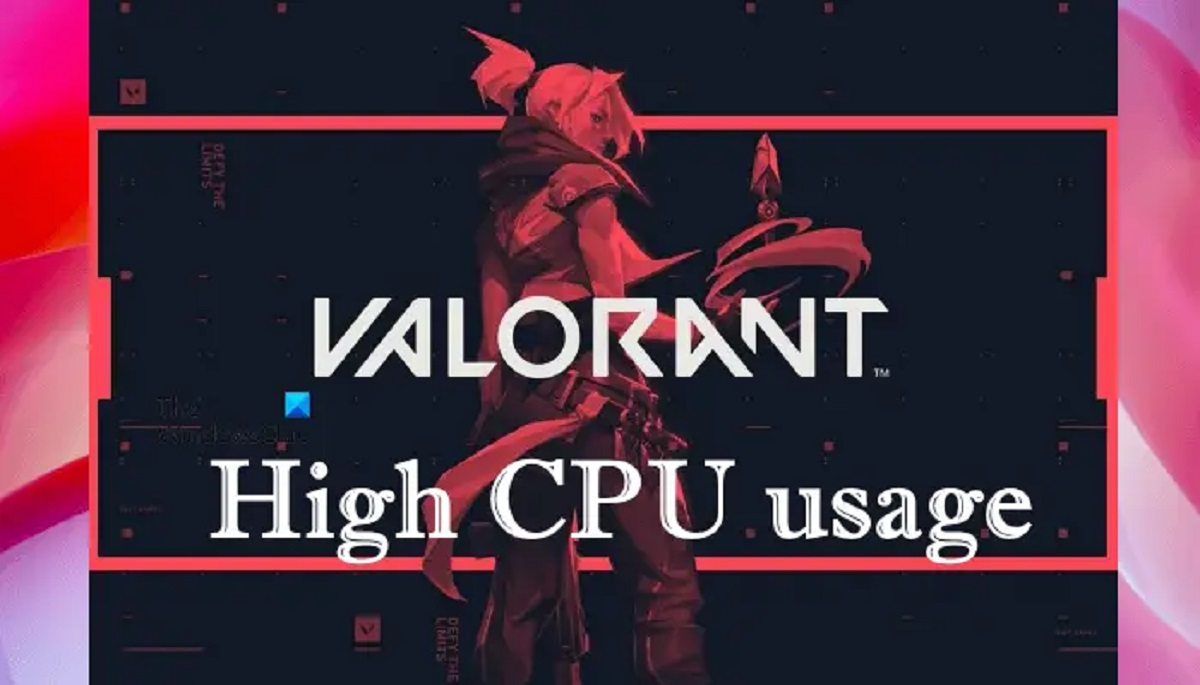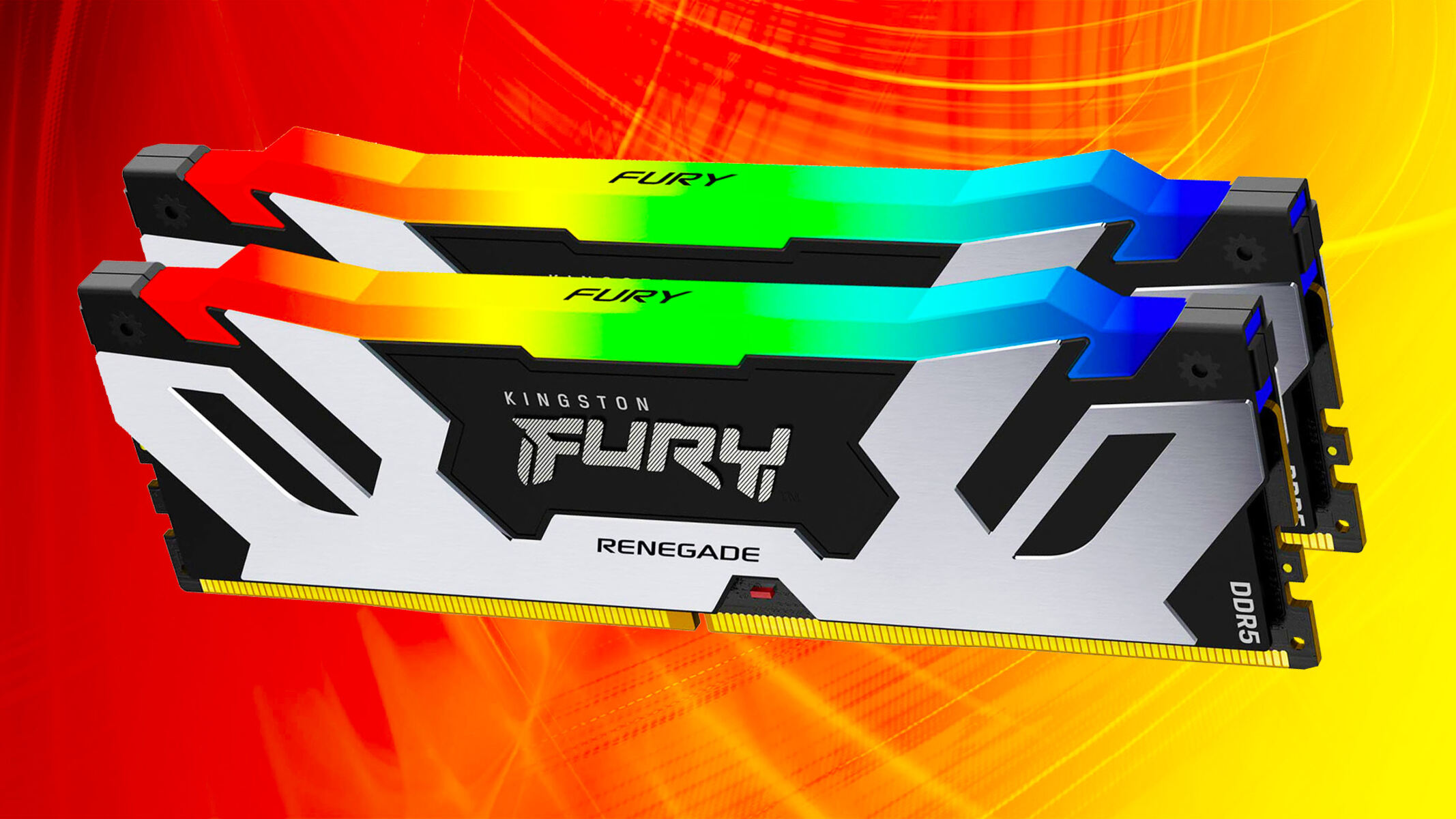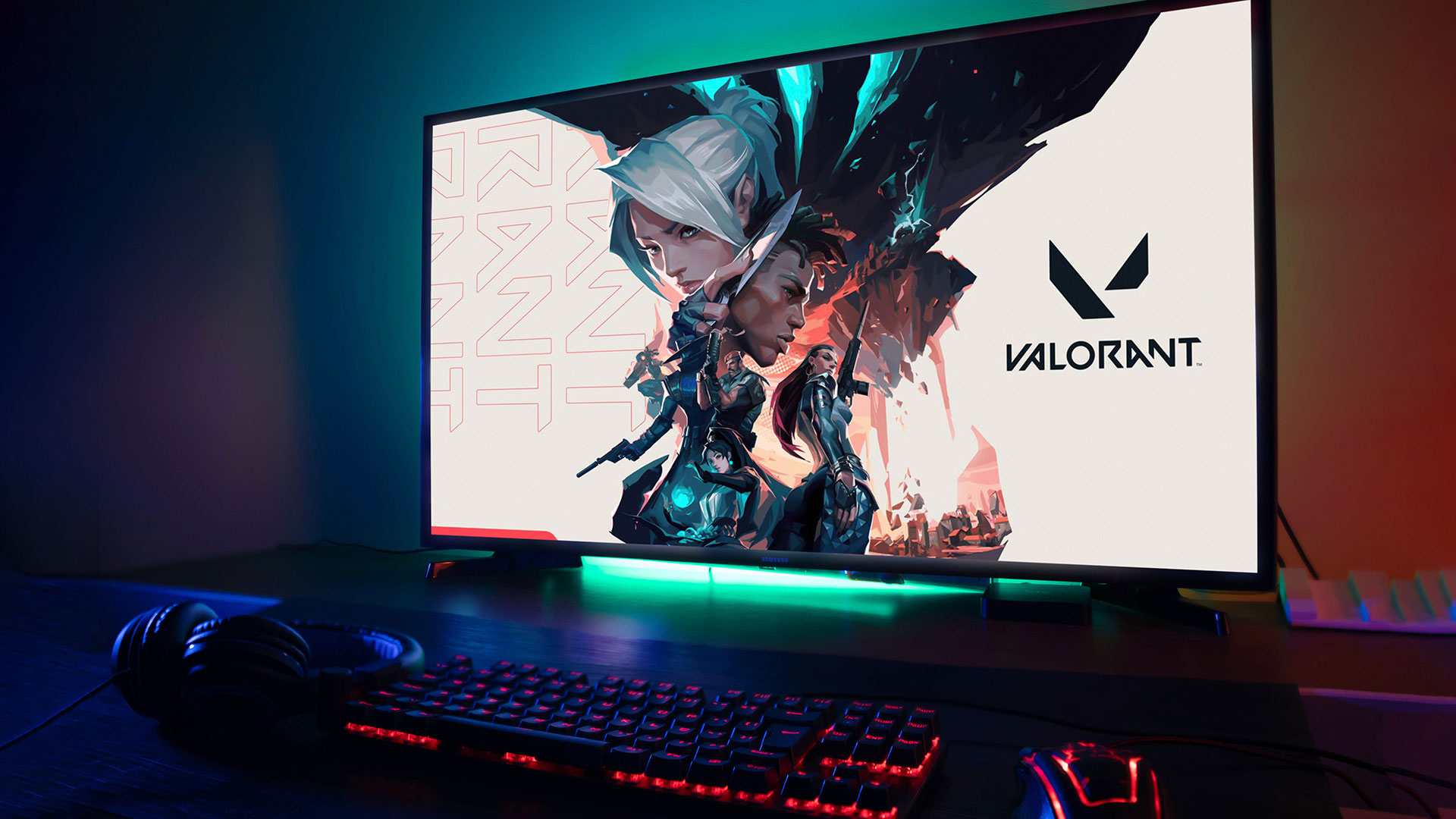Introduction
Valorant, the highly anticipated first-person shooter game developed by Riot Games, has taken the gaming community by storm. With its combination of tactical gameplay, precise gun mechanics, and team-based objectives, it has quickly gained a large and dedicated player base.
However, one common concern among Valorant players is the high CPU usage associated with the game. Many players have reported experiencing a significant increase in background CPU usage when playing Valorant, which can lead to performance issues and even system overheating.
In this article, we will delve into why Valorant uses so much CPU and explore the factors that contribute to this high resource consumption. Additionally, we will provide tips on how to optimize your system and reduce CPU usage while playing Valorant.
It is important to note that while Valorant’s CPU usage may appear excessive compared to other games, it is not necessarily a cause for concern. Modern games, especially those with complex graphics and advanced AI algorithms, require substantial processing power to deliver a seamless gaming experience.
Now, let’s take a closer look at what Valorant is and why it utilizes a significant amount of CPU.
What is Valorant?
Valorant is a free-to-play tactical first-person shooter game developed and published by Riot Games. It was officially released on June 2, 2020, and quickly gained popularity in the gaming community. The game combines elements of team-based tactical gameplay with precise gun mechanics, drawing inspiration from popular titles like Counter-Strike: Global Offensive and Overwatch.
In Valorant, players are divided into two teams, attacking and defending, and engage in a series of objective-based rounds. The attacking team is tasked with planting a bomb called the Spike, while the defending team must prevent them from succeeding. The game features a diverse roster of playable characters called Agents, each with their unique abilities that can be used strategically to gain an advantage in battles.
Valorant stands out with its emphasis on precise gunplay, where accuracy, teamwork, and quick reflexes are essential for success. Players can choose from a wide array of weapons, each with its distinct characteristics and handling. In addition, the game incorporates a range of tactical mechanics, such as wall-penetrating bullets, abilities that reveal enemy locations, and area-denying abilities that can control the flow of the game.
Valorant garnered significant attention during its closed beta phase and has since built a dedicated and competitive community. It has become a popular choice for professional esports tournaments, with teams from around the world competing for glory and substantial prize pools.
The game’s popularity can be attributed to its blend of fast-paced action, strategic depth, and Riot Games’ commitment to supporting the competitive scene. With regular updates, balance patches, and the addition of new content, Valorant continues to evolve and provide an engaging gaming experience for its community.
Now that we have a general understanding of Valorant, let’s explore why the game requires a substantial amount of CPU resources.
CPU Usage in Gaming
Central Processing Unit (CPU) usage in gaming refers to the amount of processing power the game utilizes from your computer’s CPU. The CPU is responsible for executing instructions and performing calculations, making it a crucial component in running any software, including games.
When playing games, the CPU’s workload increases significantly as it handles tasks such as running game logic, physics simulation, artificial intelligence algorithms, and rendering graphics. The more complex and demanding the game, the higher the CPU usage will be.
CPU usage is measured in percentages, with 100% indicating that the CPU is fully utilized. Ideally, you would want to have some headroom on your CPU usage to ensure smooth gameplay without any bottlenecks.
High CPU usage during gaming, such as in the case of Valorant, can lead to various issues. It can cause the game to run slower, resulting in laggy gameplay, frame drops, and overall performance degradation. Additionally, excessive CPU usage can increase the temperature of your system, potentially leading to system overheating and affecting the longevity of your components.
It is important to note that CPU usage can vary depending on the game and several other factors. Some games are more CPU-intensive, while others rely more heavily on the graphics processing unit (GPU). However, in the case of Valorant, the game tends to put a significant load on the CPU, leading to higher CPU usage compared to some other games.
Now that we understand the concept of CPU usage in gaming, let’s explore the factors that contribute to Valorant using a significant amount of CPU resources.
Factors Affecting CPU Usage
Several factors can contribute to the high CPU usage experienced while playing Valorant. Understanding these factors can help us identify why the game utilizes a significant amount of CPU resources.
- Game Complexity: Valorant is a complex game with advanced graphics, intricate gameplay mechanics, and a wide range of abilities for each character. Handling these elements in real-time requires substantial processing power from the CPU, leading to increased CPU usage.
- AI and Game Logic: Valorant features intelligent AI-controlled bots, which require the CPU to handle their behavior, decision-making, and response to player actions. The game logic, including calculations for bullet trajectory, hit detection, and character movement, also contributes to high CPU usage.
- Networking: Valorant is primarily an online multiplayer game, where players engage in matches hosted on dedicated servers. The CPU has to handle the networking protocols, data transfer, synchronization, and other related tasks, which can increase the overall CPU load.
- Optimization: Game optimization plays a crucial role in CPU usage. Well-optimized games are designed to make efficient use of system resources, including the CPU. If the game is not fully optimized, it can lead to higher CPU usage than necessary.
- Background Processes: It is important to consider other background processes running on your computer while playing Valorant. Some processes might also be utilizing the CPU, taking away resources from the game and increasing overall CPU usage.
Considering these factors, it becomes clear that Valorant’s high CPU usage is a result of its complex gameplay mechanics, advanced AI algorithms, networking requirements, and potential optimization issues.
In the next section, we will delve into why Valorant specifically uses a significant amount of CPU and explore its game optimization efforts to improve overall performance.
Why Does Valorant Use So Much CPU?
Valorant utilizes a significant amount of CPU resources due to several factors inherent to the game’s design and technical requirements.
Firstly, Valorant’s complex gameplay mechanics, which include precise gunplay, tactical abilities, and dynamic environments, contribute to the high CPU usage. The CPU is responsible for executing the calculations required for player movement, bullet trajectories, physics simulation, and rendering graphics. These tasks require substantial processing power, leading to increased CPU usage.
Secondly, Valorant’s advanced AI algorithms and game logic also contribute to the high CPU usage. The CPU handles the behavior and decision-making of AI-controlled bots, as well as the calculations required for hit detection and character movement. This complexity adds to the overall CPU load while playing the game.
Furthermore, Valorant’s networking requirements also affect CPU usage. As an online multiplayer game, Valorant relies on the CPU to handle networking protocols, data transfer, and synchronization with other players and servers. These tasks put an additional strain on the processor, contributing to increased CPU usage.
Another factor that can impact CPU usage in Valorant is game optimization. While Riot Games continually works on optimizing the game’s performance, some players may still experience higher CPU usage due to potential optimization issues. Suboptimal code execution and inefficient resource utilization can lead to increased CPU usage throughout gameplay.
It’s worth noting that individual system configurations can also influence CPU usage. The performance of the CPU itself, as well as other hardware components such as memory and storage, can impact overall CPU utilization. Outdated drivers or conflicting software running in the background can also contribute to higher CPU usage while playing Valorant.
Overall, it is a combination of Valorant’s complex gameplay mechanics, advanced AI algorithms, networking requirements, and potential optimization issues that contribute to the game’s high CPU usage. By understanding these factors, players can take steps to optimize their system and reduce CPU usage while enjoying an optimal gaming experience.
Game Optimization
Valorant’s developer, Riot Games, is committed to optimizing the game’s performance and reducing CPU usage to provide players with a smooth and enjoyable gaming experience. Game optimization involves identifying and addressing factors that contribute to high CPU usage and implementing changes to improve overall performance.
Riot Games regularly releases updates and patches aimed at optimizing Valorant’s performance. These updates may include changes to the game’s code, improved resource management, and bug fixes that can help reduce CPU usage.
In addition to these updates, Riot Games actively solicits feedback from the Valorant community. This feedback plays a crucial role in identifying specific performance-related issues and areas where further optimization is needed. By listening to the community and addressing their concerns, Riot Games can continually refine the game to minimize CPU usage.
It is worth mentioning that optimizing a game’s performance is a complex and ongoing process. The goal is to strike a balance between delivering visually stunning graphics, responsive gameplay, and efficient resource utilization. This optimization involves fine-tuning various aspects of the game, including rendering techniques, AI algorithms, and overall code efficiency.
Players can also contribute to game optimization by ensuring they have the latest updates and drivers installed. Keeping your graphics card drivers up to date can improve compatibility and performance. Additionally, closing unnecessary background processes and disabling resource-heavy applications can help allocate more CPU resources to Valorant.
If you are experiencing high CPU usage while playing Valorant, you can explore the game’s settings menu to adjust certain graphics options. Lowering the graphical settings, such as reducing the resolution, shadow quality, or anti-aliasing, can relieve some of the strain on your CPU and result in smoother performance.
Lastly, regularly cleaning your computer’s hardware, particularly the CPU’s cooling system, can help maintain lower temperatures. High temperatures can cause the CPU to throttle or even overheat, which can further impact overall system performance and stability.
Overall, game optimization is a collaborative effort between the developers and the community. By continuously refining the game, addressing performance-related concerns, and implementing optimization measures, Valorant strives to provide an optimal gaming experience with minimized CPU usage.
Tips to Reduce CPU Usage in Valorant
If you are experiencing high CPU usage while playing Valorant, there are several tips and tricks you can try to reduce the strain on your CPU and improve overall performance:
- Lower Graphics Settings: In the game’s settings menu, consider lowering graphics options such as resolution, shadow quality, and anti-aliasing. This can help reduce the workload on your CPU and improve performance.
- Update Drivers: Ensure that your graphics card drivers and other system drivers are up to date. Outdated drivers can lead to compatibility issues and hinder optimal performance.
- Disable Background Processes: Close unnecessary applications and background processes that are consuming CPU resources. This can free up additional processing power for Valorant.
- Monitor CPU Temperature: Keep an eye on your CPU’s temperature while playing Valorant. If it gets too hot, it can impact performance and stability. Consider cleaning your computer’s cooling system and ensuring proper airflow.
- Limit FPS: Consider capping the game’s frame rate or using V-Sync to prevent your CPU from working harder than necessary to render unnecessary frames.
- Scan for Malware: Run a malware scan on your computer to ensure no malicious programs are using your CPU in the background. Malware can significantly increase CPU usage and impact game performance.
- Check Power Management Settings: Make sure your power management settings are set to high-performance mode. This ensures your CPU is operating at its maximum potential, rather than being limited for power-saving purposes.
- Consider Hardware Upgrades: If you are consistently experiencing high CPU usage and performance issues, it might be worth considering upgrading your CPU or other hardware components for better overall performance.
Keep in mind that each system is unique, and not all of these tips may provide the same results for everyone. Experimenting with these suggestions can help you find the best combination for your specific hardware and optimization needs.
By implementing these tips and finding the optimal settings for your system, you can reduce CPU usage and ensure a smoother gaming experience in Valorant.
Conclusion
In conclusion, Valorant’s high CPU usage is a common concern among players. The game’s complex gameplay mechanics, advanced AI algorithms, networking requirements, and potential optimization issues contribute to the significant CPU usage experienced while playing.
Valorant, being a visually impressive and competitive multiplayer game, demands substantial processing power from the CPU to handle tasks such as physics simulation, rendering graphics, and executing game logic. The game’s design, with its precise gunplay and tactical abilities, further intensifies the CPU’s workload.
Riot Games, the developer of Valorant, actively works on game optimization to improve performance and reduce CPU usage. Regular updates, bug fixes, and community feedback play critical roles in this process. Additionally, players can also take measures to optimize their system, such as updating drivers, lowering graphics settings, and managing background processes.
While high CPU usage can cause performance issues, it is important to remember that it is not inherently detrimental. CPUs are designed to handle heavy workloads, and modern games like Valorant require significant processing power to deliver a seamless and immersive gaming experience.
By understanding the factors that contribute to Valorant’s high CPU usage and implementing the tips mentioned in this article, players can optimize their systems and enjoy a smoother gaming experience. It is a collaborative effort between the game developers and the community to continually refine and enhance the game’s performance.
So gear up, strategize, and dive into the world of Valorant, knowing that you have a better understanding of why it uses a significant amount of CPU resources and how to optimize your system for the best gaming experience possible.

























